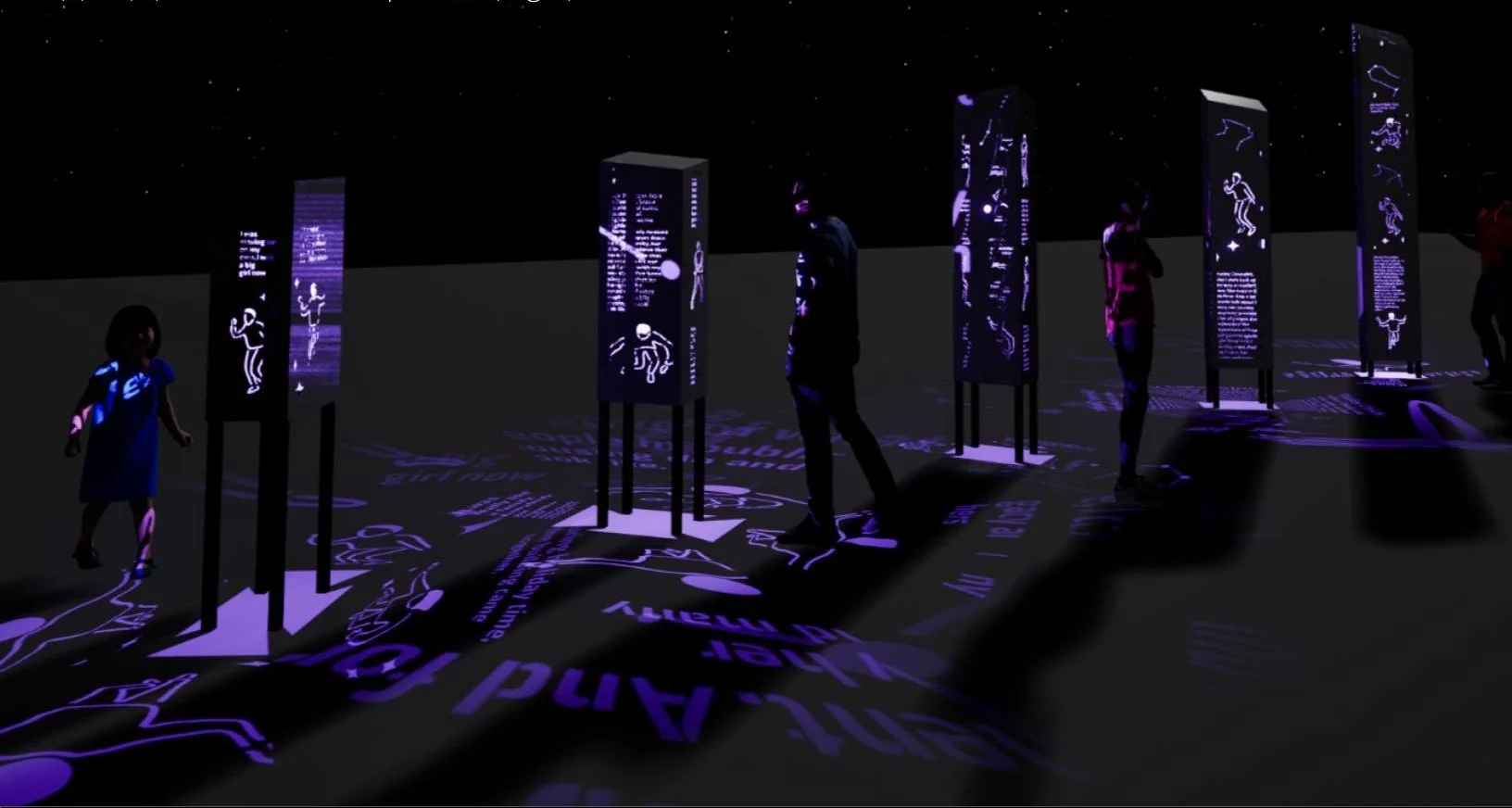
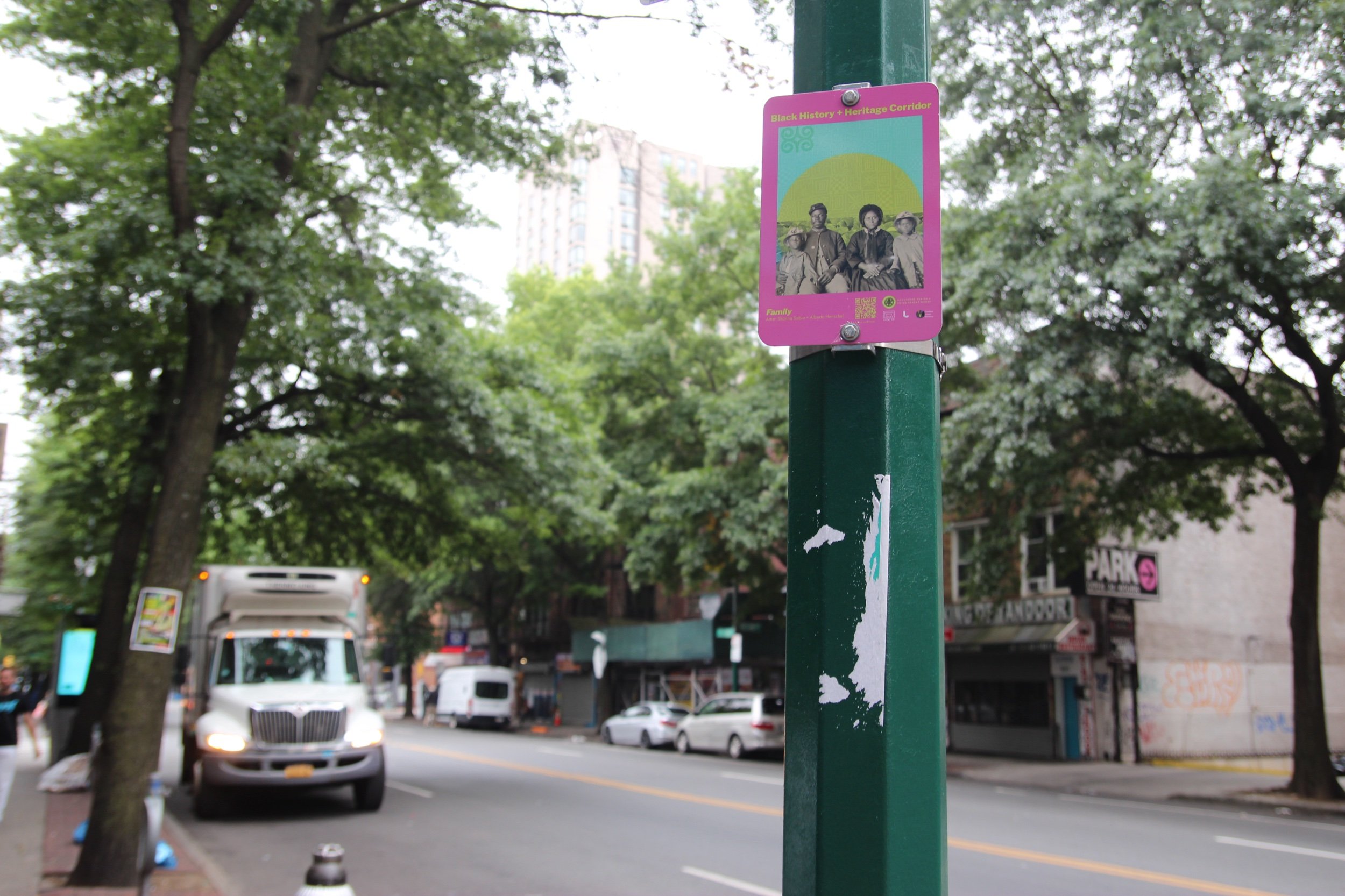
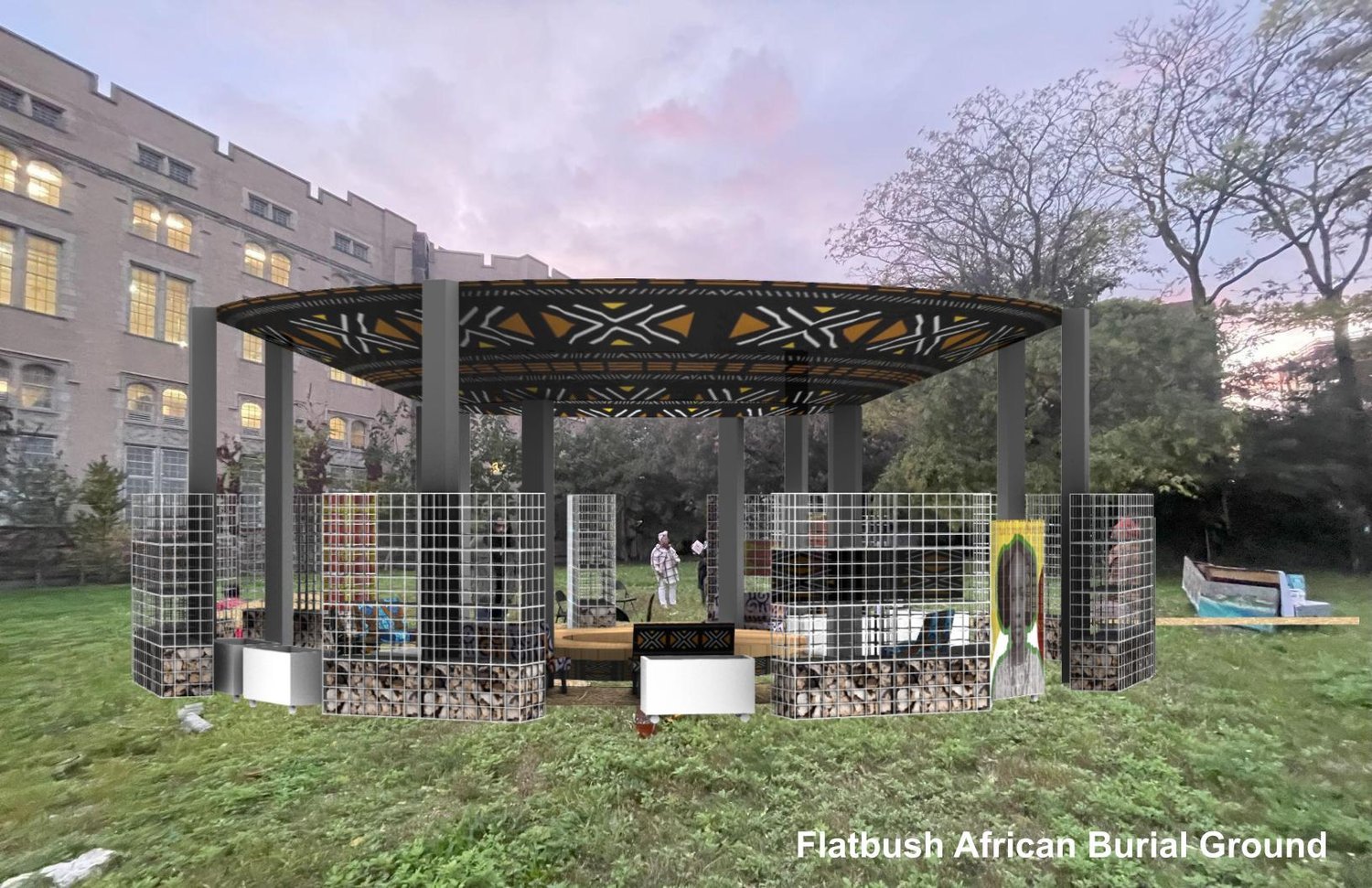
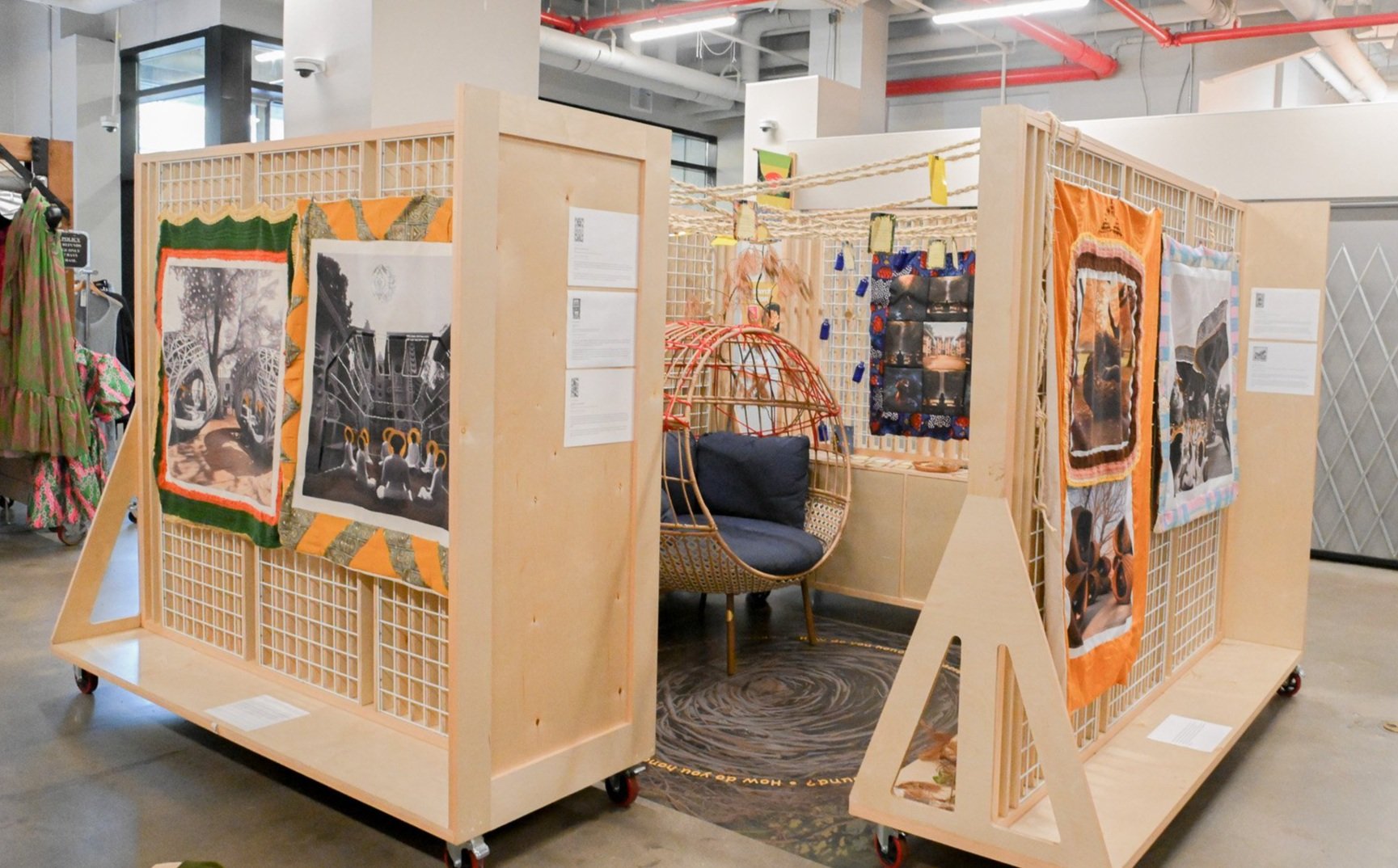
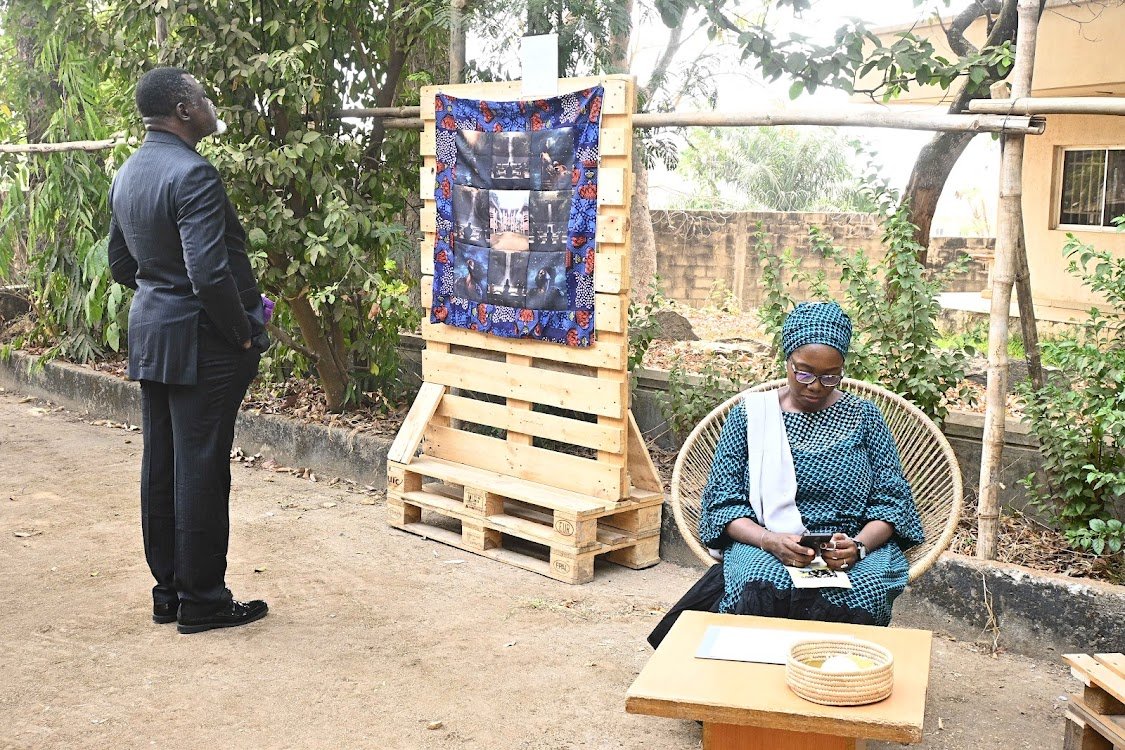



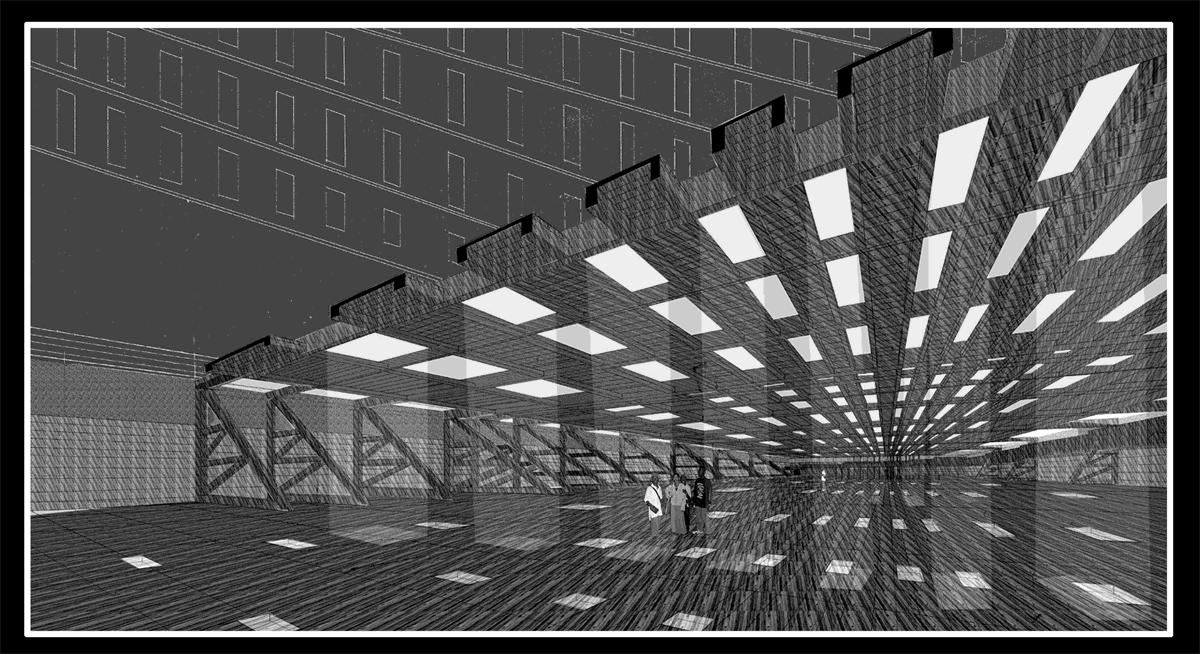
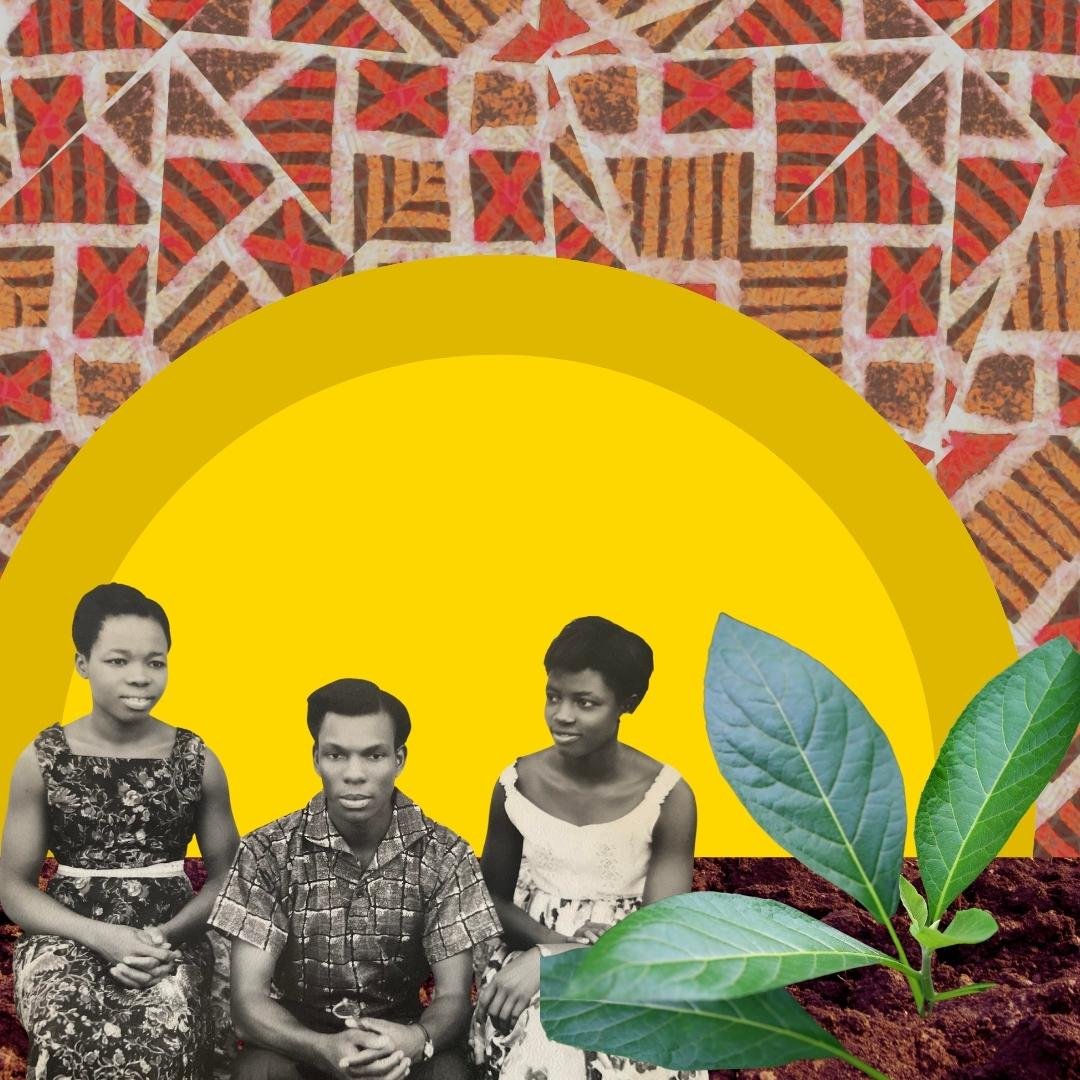

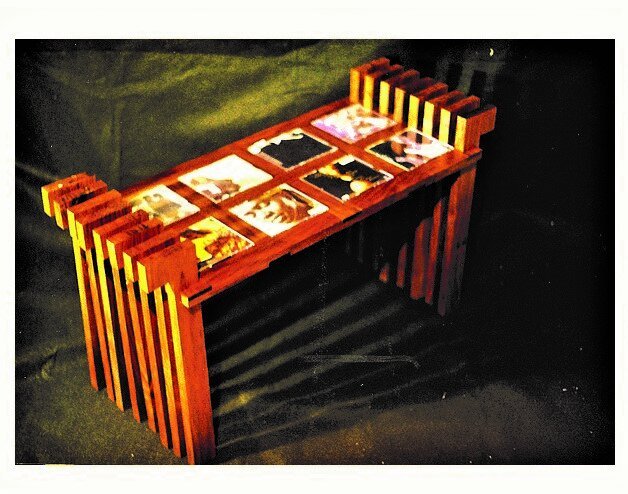
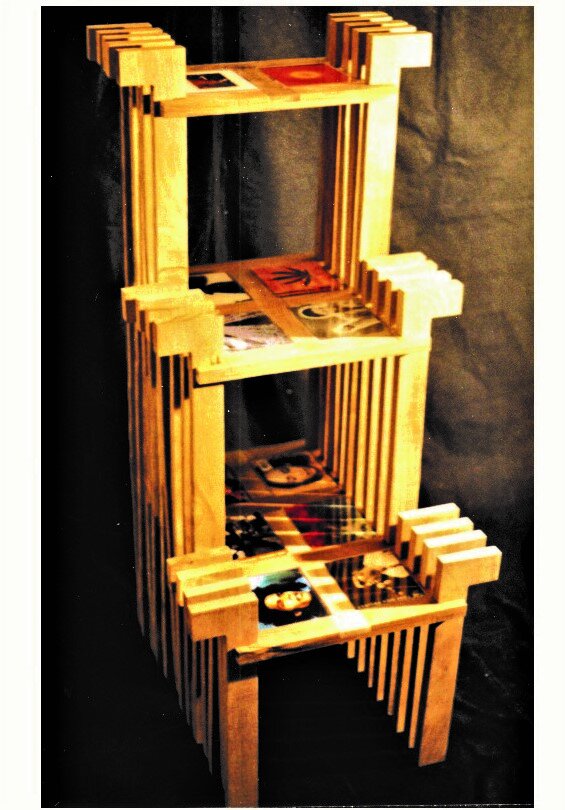
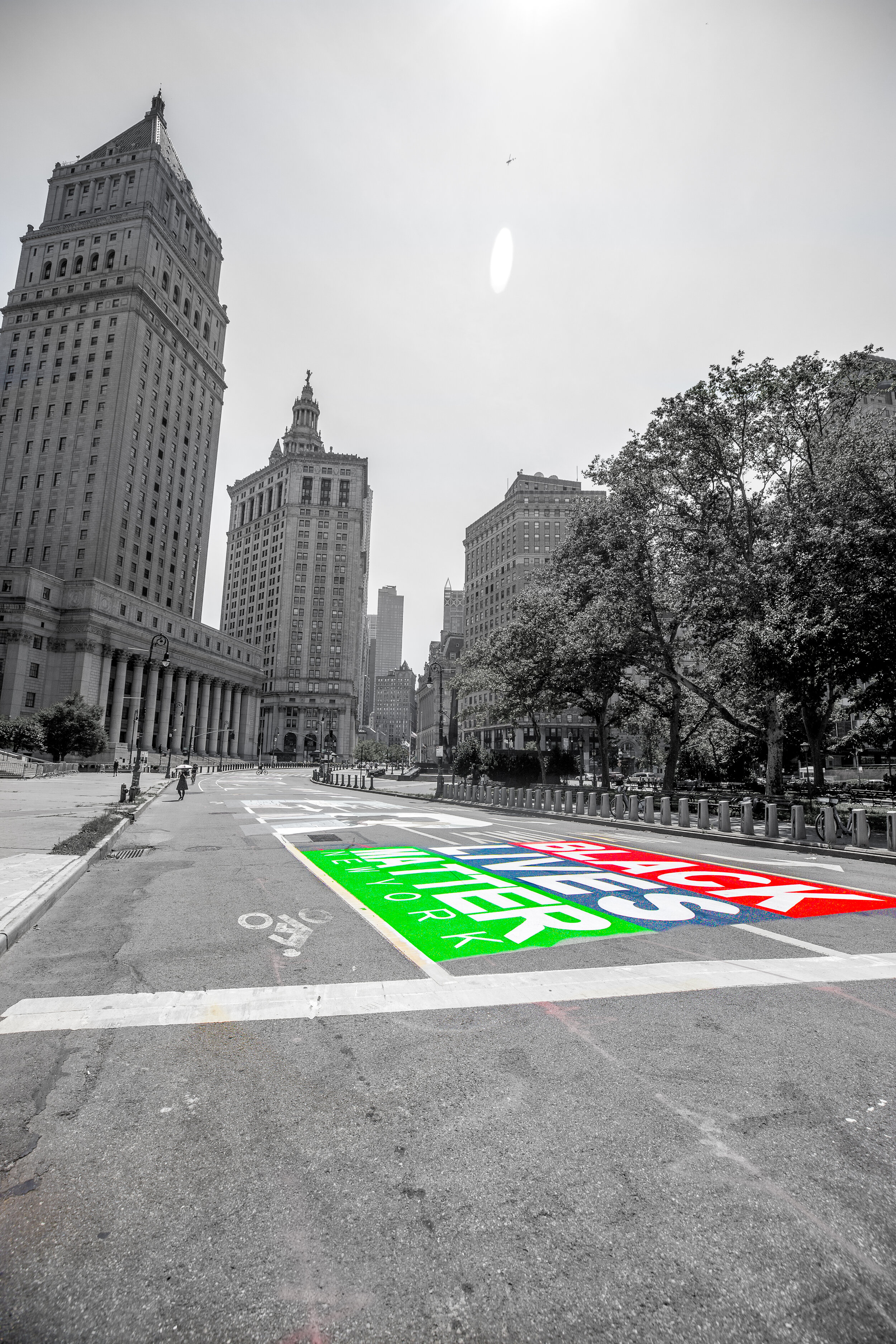

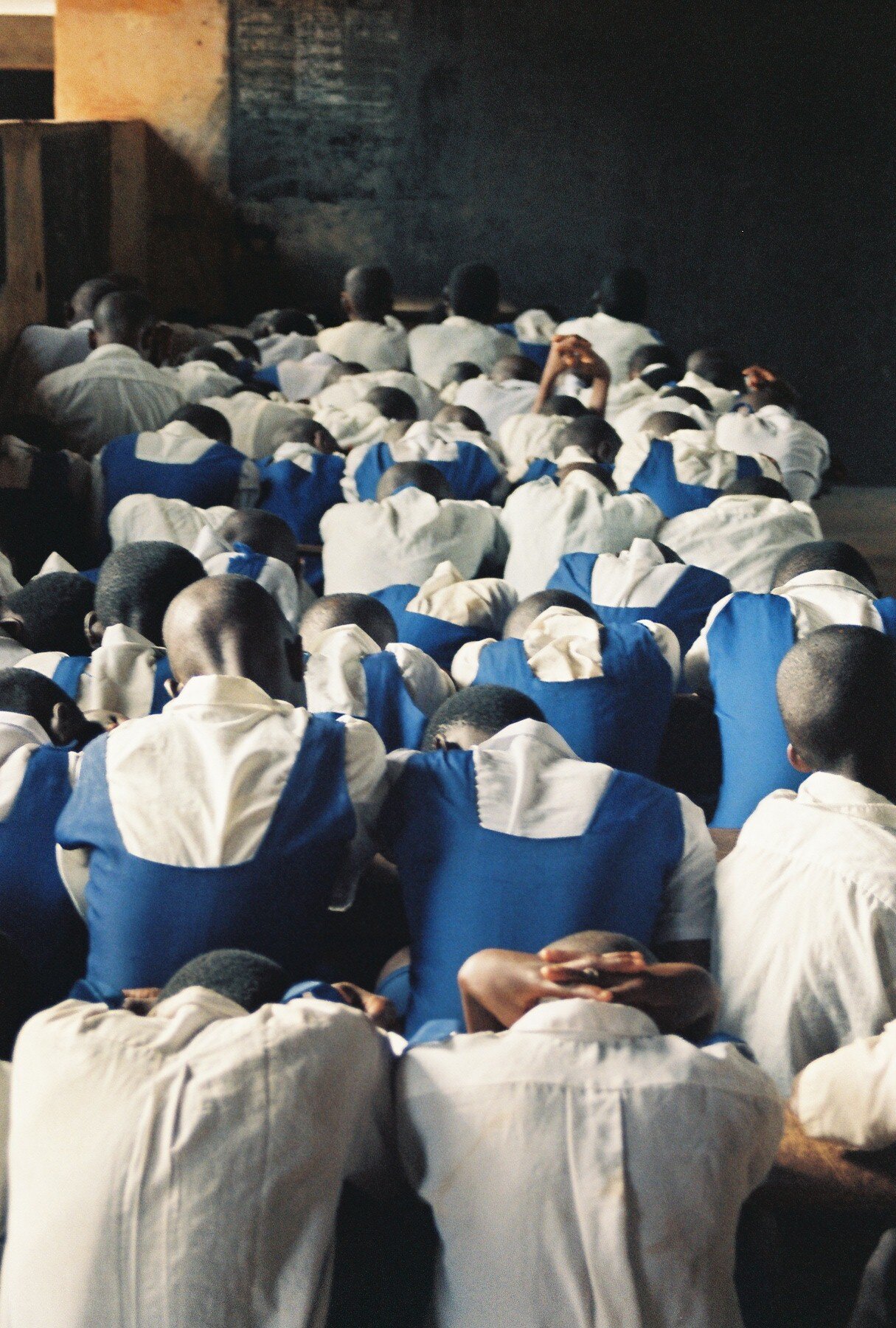

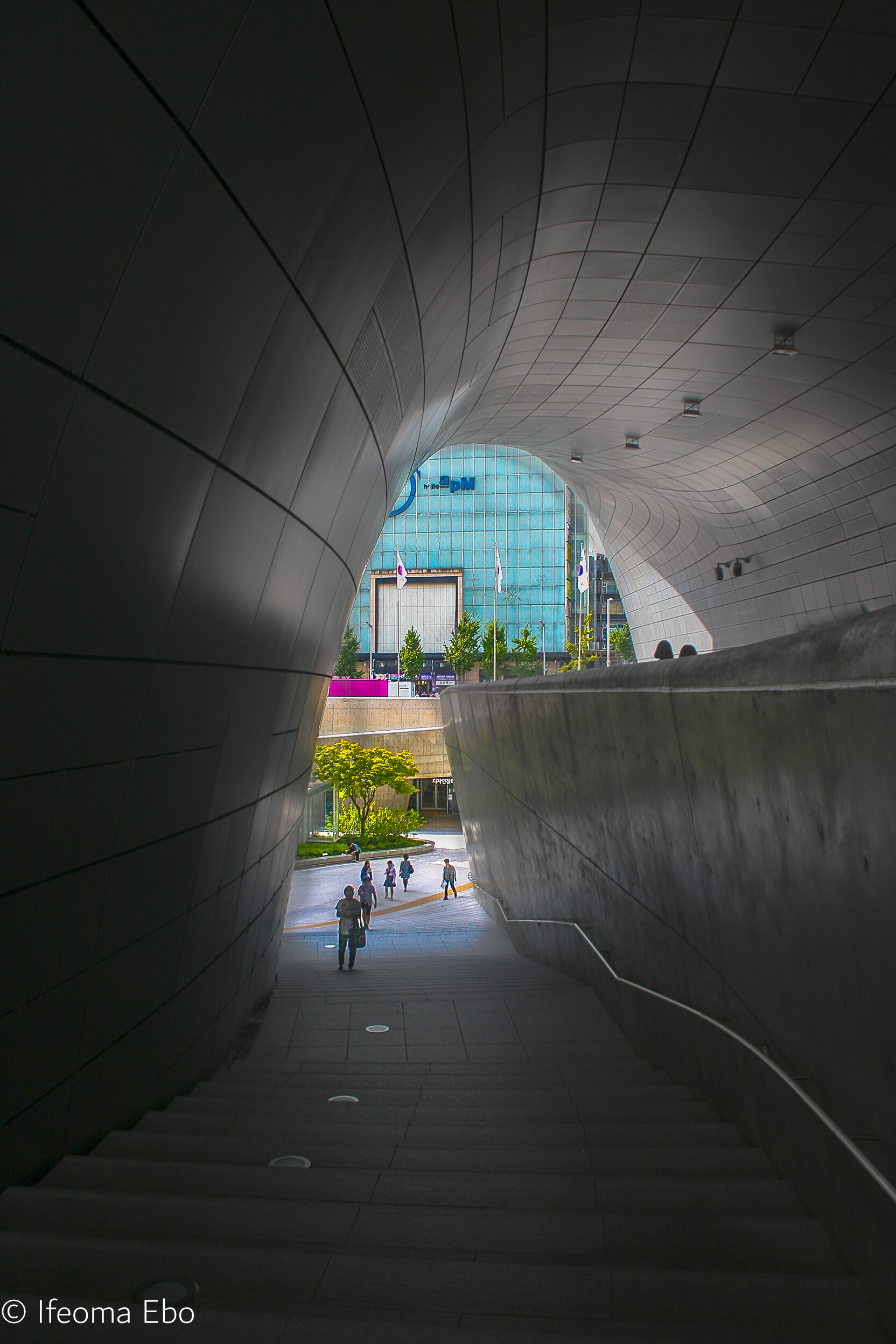
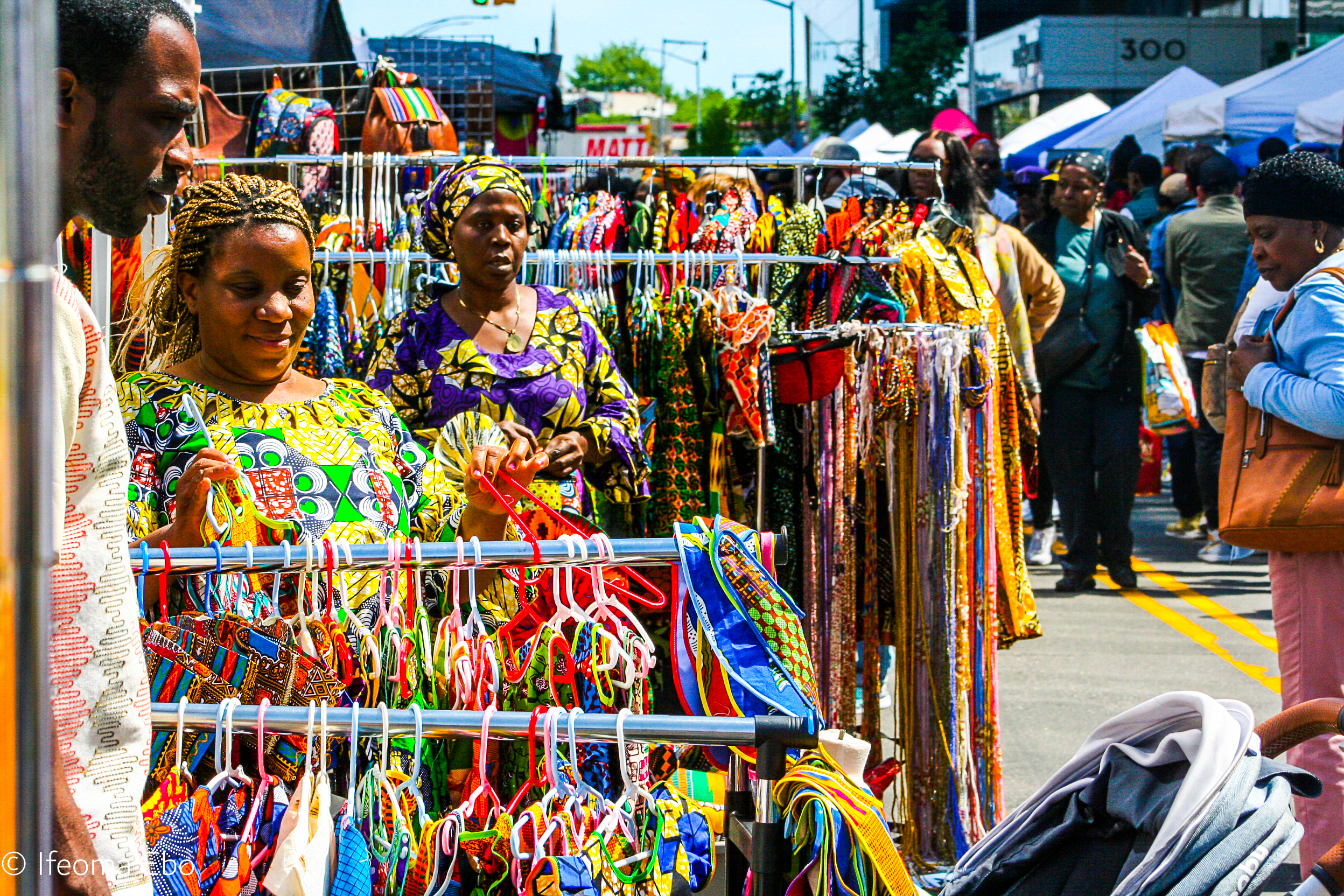

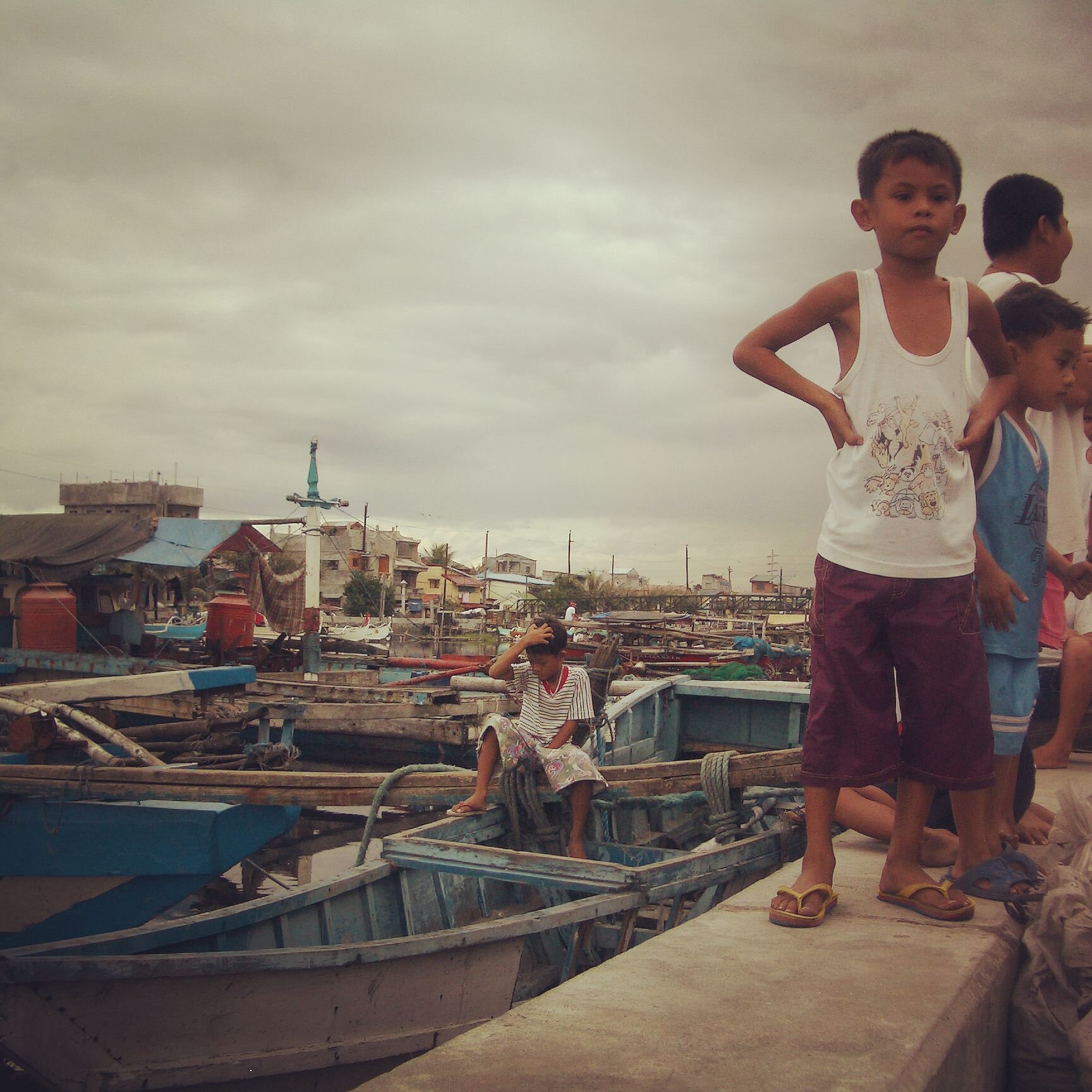

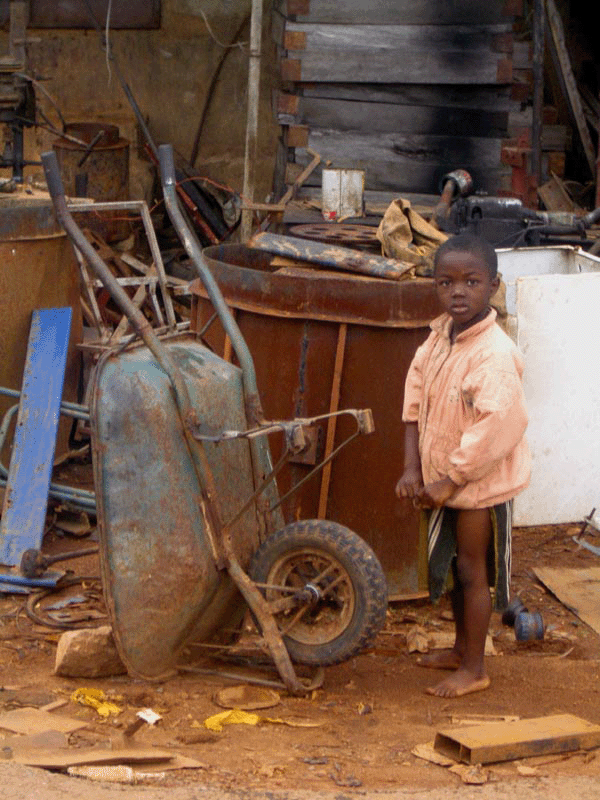
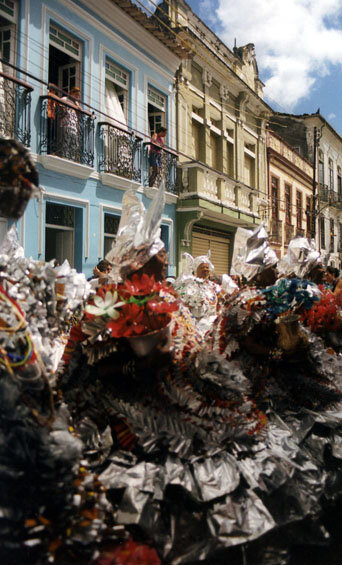
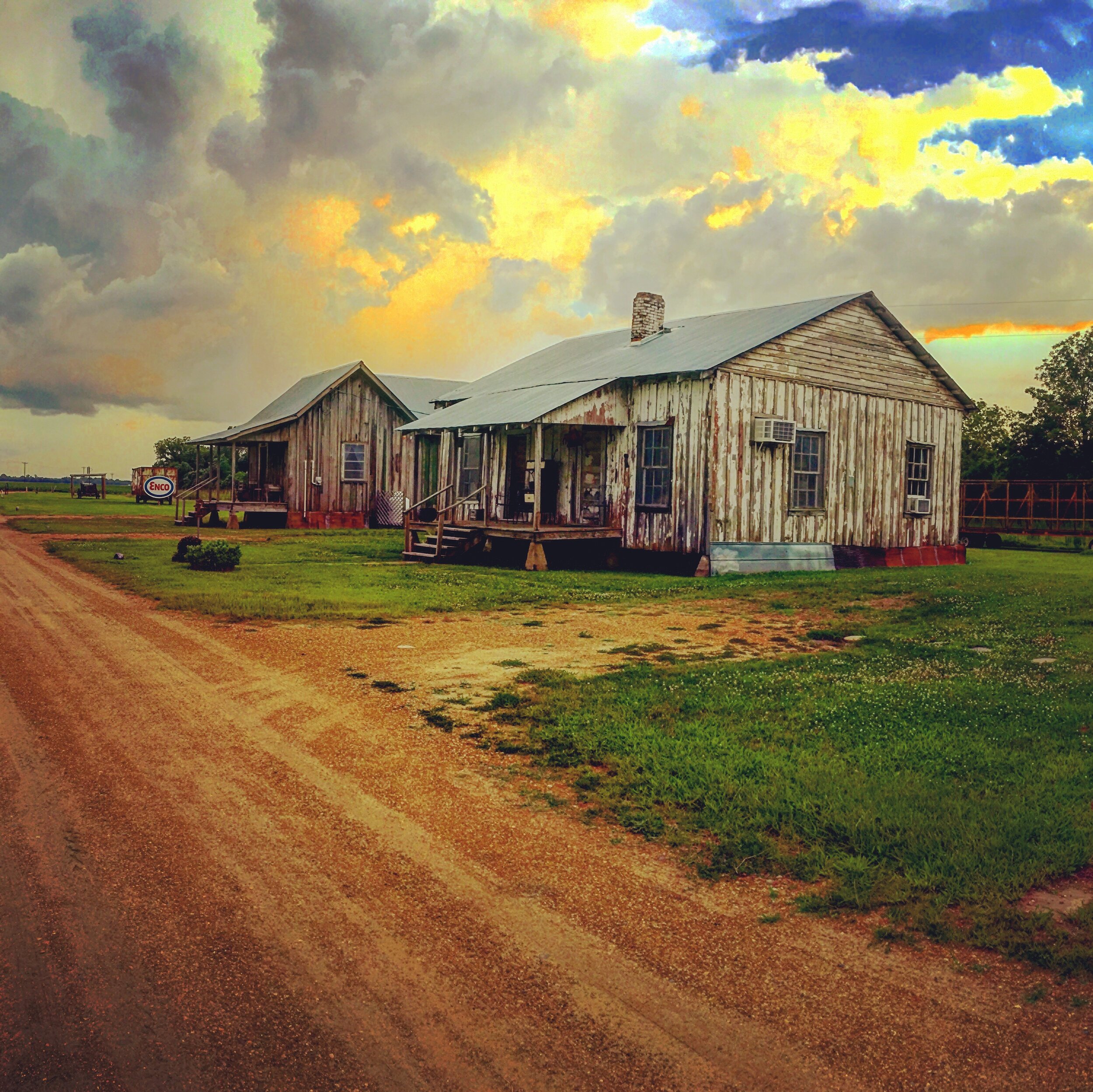
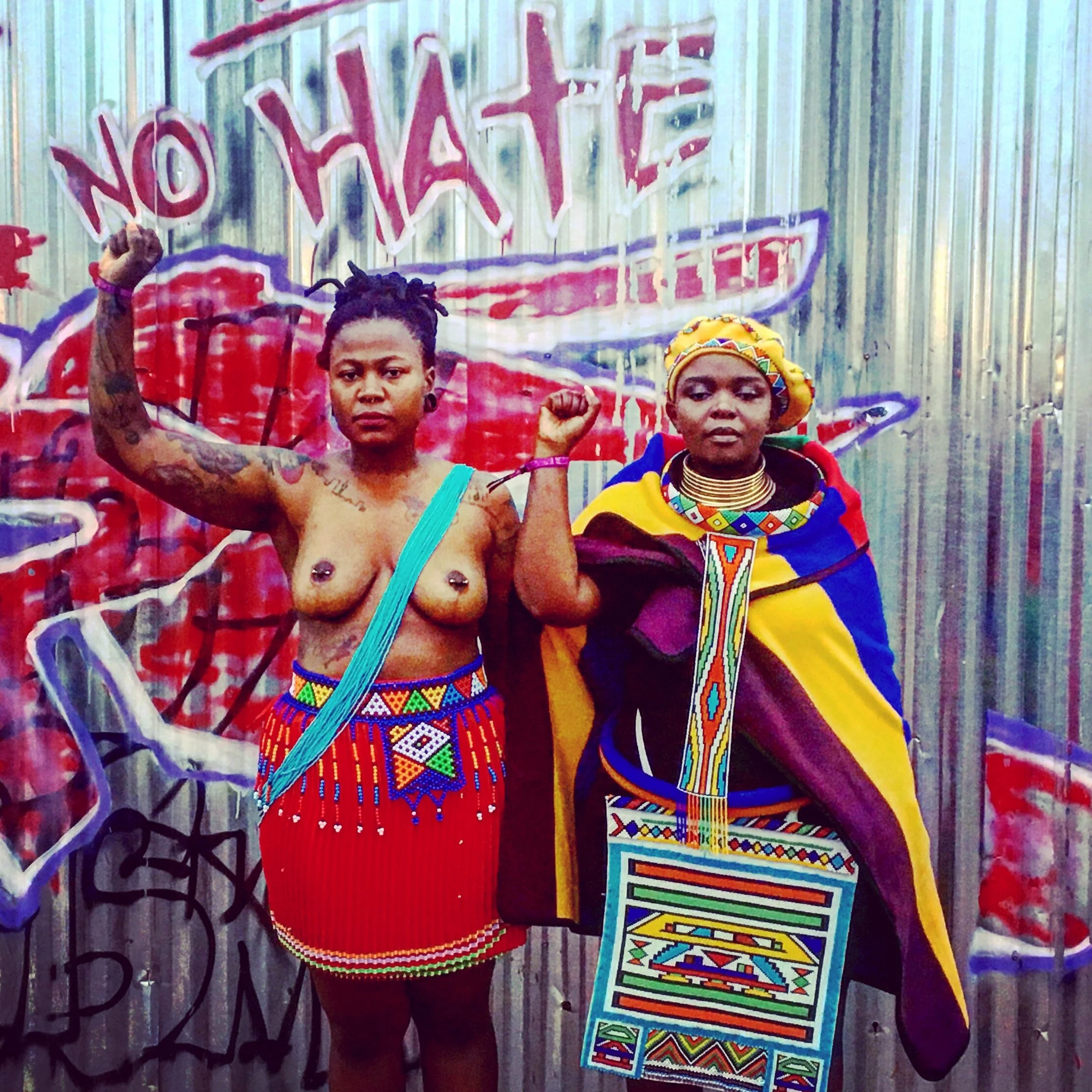

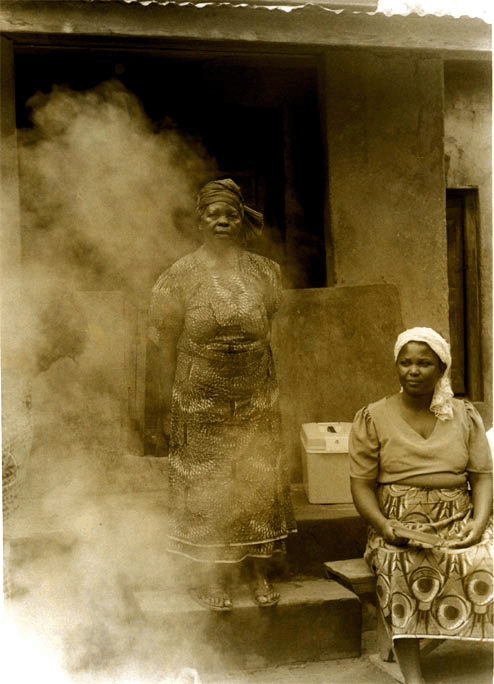
“Cultural self-determination is a critical aspect of justice and equity” - Mario Rosario Jackson: Chair of the National Endowment for the Arts
Ifeoma’s work as an artist centers participatory practices that engage diverse communities and she has used her craft to advocate for, design/plan with and visually showcase the stories of communities of color. As a creative Ifeoma explores her passion for visual storytelling to capture her global explorations of cultural urbanism – the intersection of space, place, people and culture. Through collage art, architectural drawing, photography, fiber/textile art and artificial intelligence she creates visual imagery that displays community narratives. In the same vein her dynamic public art installations create a platform to display local narratives and are used as a tool for placekeeping. Her artwork has been exhibited at the Oakland Museum, Cornell University Willard Straight Hall Gallery, MIT Rotch Library Gallery, and the Center for the Advancement of Afrocentric Design at the African University of Science & Technology. She is an award-winning artist with grant awards from the MIT and Cornell University Council for the Arts, Cooper Union, New York State Council on the Arts, Black Artist’s & Designers Guild, the Architectural League and United States Artists.
Project Title: Migration - Kingsborough Community Heritage Walk
Project Location: Kingsborough Houses, Brooklyn, NY
Project Client: Public Housing Community Fund (PHCF), Kingsborough Houses Residents Association, NYC Housing Authority
Date: 2024-2025
Role: Project Artist
Collaborators: Jerome Haferd Studio, Pedro Cruz Cruz (JHS), Violet Greenberg (CUA Community Designer); 618 Design (Fabricators), Bartholomew Lighting, Leni Schwendinger Lighting Projects, Fulton Art Fair, African Peach Coalition
About:
This permanent installation is part of the Capital Project to restore Exodus and Dance frieze at Kingsborough Houses is led by The Public Housing Community Fund (PHCF), funded by the Andrew W. Mellon Foundation in partnership with Fulton Art Fair, New York City Housing Authority, New York City Council, the Kingsborough Housing Resident Association, Weeksville Heritage Center, African Peach Arts Coalition, and other local cultural institutions and community-based organizations.
Working alongside local artists and the Kingsborough Houses resident community, the Exodus & Dance Interpretive Storywalk project employs a place-based strategy highlighting shared histories, memories, and aspirations. The Storywalk serves as a medium reflecting community voices and narratives while honoring the significance of the historic restored 1938 sculptural frieze, Exodus and Dance, by Richmond Barthé, a Harlem Renaissance artist.
Inspired by Barthé's frieze, multiple migration histories, and Egyptian motifs, the permanent Storywalk installations form a constellation of thirty-five steel artworks distributed throughout the campus, preserving the rich cultural heritage of Kingsborough Houses, the largely African American community. The solar-illuminated forms feature inscribed text and images depicting anecdotal and historical material related to Barthé and Kingsborough Houses, alongside contemporary quotes, movement, and memories from residents in their own voices. Themes include "legends" of Kingsborough, the Great Migration from the United States South, memories of Exodus and Dance ("The Wall"), and the importance of community and extended family.
Migration features and amplifies the voices, memories, and aspirations of residents and descendants of the Great Migration. This place-based interpretive artwork blends historic preservation and storytelling across a constellation of 35 steel structures spanning the 16-acre campus—art by Jerome Haferd Studio and Creative Urban Alchemy, fabrication by 618 Design.
Project Location: Flatbush Avenue, Brooklyn, New York
Client: GrowHouse Design + Development Group , Urban Design Forum
Partners: NYC Department of Transportation; Design Team: Deena Darby (Project Management), Kami Beckford (Graphic Design), Astra Baker (Local Artist), Jojo Buchmann (Local Artist), and Lorraine Colbert (Local Artist), Shanna Sabio (Local Artist)
Date: 2023-2025
Role: Designer / Engagement Strategist
About:
CUA partnered with GrowhouseNYC to create cultural signs along Flatbush Avenue, marking the beginning of Black History + Heritage Corridors in neighborhoods throughout Brooklyn. This transformative project celebrates the rich cultural connections and historical legacy of people of African descent in Brooklyn, aiming to uplift a community long marginalized, discriminated against, and disenfranchised by the very city they call home. This project is in advance of our approach to the 400th anniversary of New Amsterdam’s founding in 1625.
A citywide youth design competition was held and three youth artists of color were selected and awarded and their work was installed along Flatbush Avenue, creating a Black History + Heritage Corridor connecting two significant sites in Black history: Lefferts Historic House and the Flatbush African Burial Ground.
The Corridor transcends mere preservation—the goal is to actively weave a cultural and economic ecosystem that will connect Black historic sites like the Flatbush African Burial Ground and Weeksville Heritage Society to contemporary Black-owned businesses. In the face of climate change and shifting demographics, The Corridor fosters community resilience, healing, and inspiration, empowering us to forge collective futures that resonate with the essence of Black people throughout the diaspora across generations.
Project Location: Flatbush African Burial Ground; Brooklyn, New York
Client: GrowHouse Design + Development Group , Urban Design Forum
Partners: Design Team:Immanuel Oni (Liminal - Design Renderings), Deena Darby (Project Management), Kami Beckford (Graphic Design),
Date: 2023-2024
Role: Designer / Engagement Strategist
About:
Creative Urban Alchemy was selected as the project lead for the Urban Design Forum Local Design Center RFP to support and partner with GrowHouse Design and Development Group to develop a community driven approach to public art, and memorialization at the Flatbush African Burial Ground and an activation plan for a Black History + Heritage Corridor connecting historic sites of Black Brooklyn.
The design of the Dikenga Pavillion combines Central African cosmology and West African symbology into a form that celebrates and creates space for community rest and ritual gathering. The gabion enclosure presents an opportunity for participatory art, youth skill building and a community crafted gravestone that carries on a life of its own.
Exhibition Location: Flatbush Central Caribbean Marketplace; Brooklyn, NY
Funders: Black Artists & Designers Guild, The Architectural League, New York State Council on the Arts
Date: 2023 - 2024
Partners: Antoinette Cooper of Black Exhale
Role: Artist, Designer
About:
Liberation is a spatial practice. Mario Gooden – Dark Space
The Reparations in Public Space Exhibition is a collaborative project between Ifeoma Ebo of Creative Urban Alchemy and Antoinette Cooper of Black Exhale. Through community-engaged design workshops, speculative architectural visualizations, and poetic narratives, this exhibition explores how public spaces can be transformed from sites of collective trauma into platforms for healing, repair, and Black joy.
The exhibition showcases the outcomes of a participatory design workshop where community members co-created a spatial design manifesto and generated ideas using the artificial intelligence platform MidJourney. These visions were then developed into a series of speculative designs by Ifeoma Ebo that re-imagine existing public sites in Brooklyn—the Flatbush African Burial Grounds—associated with historical racial trauma. Alongside these designs, Antoinette Cooper presented poetry and narratives inspired by visits to African Burial Grounds across New York City, including the Flatbush African Burial Ground, Van Cortlandt Park, the M’Finda Kalunga Community Garden, and the African Burial Ground National Monument. These literary works provided a deeper emotional and historical context, honoring the stories of those laid to rest and connecting their legacies to present-day struggles for space, dignity, and recognition.
Together, the speculative designs and poetic narratives aimed to change spatial narratives and envision public spaces as sacred places for remembrance, emotional release, intergenerational connection, and collective imagining of more equitable futures.
Exhibition Location: African University of Science & Technology, Abuja, Nigeria
Partners: Community Planning & Design Initiative (CPDI) Africa Global Research Hub
Date: 2025
Role: Artist, Designer
Nigerian Television Authority coverage of the Exhibition opening
Media: Crocheted bordered A.I. images on cotton canvas, cut-and-pasted printed paper, fabrics (aso-òkè, Ankara, jubilee), glass beads, red Nigerian earth mixed with water
Date: 2023 - 2024
Role: Artist, Designer
About:
These quilts emerge from a lineage of diasporic textile traditions that have long served as repositories of African cultural memory and resistance. Drawing on crafting practices from West African aso-oke and kente weaving to Southern American quilting and Caribbean appliqué work, this collection honors the ways Black hands have transformed necessity into artistry across generations and geographies.
Through the intentional fusion of traditional techniques—crochet borders reminiscent of Ghanaian kente edging, beadwork echoing Yoruba spiritual adornment, and appliqué methods preserved in Black American communities—these pieces manifest what our ancestors knew: that textile arts are not merely decorative but deeply communicative. The geometric patterns, color symbolism, and narrative imagery speak a visual language that has survived the Middle Passage and centuries of attempted erasure.
"Reparations in Public Space" reimagines how collective healing might be woven into our built environment. Each quilt presents a speculative sanctuary where ancestral technologies and futuristic visions coexist—spaces where Oshun's healing waters flow, where communal drumming bridges worlds, where indigenous geometries guide architectural innovation.
In continuing these crafting traditions, I participate in an unbroken conversation with foremothers who encoded knowledge, resistance, and spirituality into every stitch, creating pathways toward liberation through the deliberate act of making beauty from fragments of what remains.
Project Title: Brooklyn Navy Yard Public Art
Project Location: Brooklyn Navy Yard
Date: 2025
Role: Project Designer
Collaborator: Violet Greenberg (graphic illustration)
About:
Finalist Submission for the Brooklyn Navy Yard call for Artists
The BuckTown Stitch installation, located at the Brooklyn Navy Yard between Buildings 77 and 92, features an aluminum ribbon weaving through an iron fence. Perforated with imagery and terms representing Brooklyn’s diverse neighborhoods, the ribbon symbolizes interconnectedness and adaptability. Its fluid design contrasts with the strength of the iron fence, illustrating the harmony between progress and tradition. This interplay mirrors Brooklyn’s constant reinvention while celebrating its enduring values of resilience, creativity, and community.
The weaving motion reflects Brooklyn’s interconnected neighborhoods and people, much like the unity evoked in the Bucktown anthem. The fence, traditionally a boundary, becomes a canvas for connection, symbolizing Brooklyn’s redefined industrial and cultural landscape. Positioned at the Navy Yard, the installation bridges the site’s shipbuilding past with its present role as a hub for innovation and community engagement.
Project Title: Memorial of the Christie Street African Burial Ground
Project Location: M’finda Kalunga Garden, New York City
Date: 2023
Role: Project Designer
Collaborator: Kami Beckford (graphic illustration and concept development)
About:
Submission for the Christie Street African Burial Ground Memorial call for Artists by FABNYC.
In the spirit of sharing, learning and exploration, we are proposing a piece centered around the Adrinka symbol Nea onnim no sua a ohu— the full meaning of the symbol comes from a proverb that says “one who does not know can know from learning”. We wanted to connect this art piece to an African art form that is rooted in storytelling, cultural heritage and knowledge sharing. The Adinkra symbols come from Ghana, West Africa – a place where many enslaved African people were stolen from and brought to the shores of New York City.
Art is a learning medium by nature. In our conceptual design, we explore art as a tool for learning, and how art can carve out a physical learning space in the garden. We see our permanent sculpture creating a physical outdoor space that can hold different programs and activities.
The form of this sculpture uses the Neo Onnim Adrinka symbol. It plays with illusion - looking at the sculpture directly on, you would see the symbol in its entirety as a 2D shape. However, as you approach the sculpture from different angles, it explodes out into different pieces. These pieces are different types of furniture and shelters - chairs and benches, tables, walls, small stages - extracted from the symbol lines, there are many possibilities for arrangement in the garden. Benches and tables could be a place for a meeting or reflecting, walls with shelves can serve as gallery walls or space for altars, and the entire piece could be a stage for performance art.
Project Title: Uncovering an Invisible City.
Project Location: Civic Center, New York City
Date: 2002
Role: Project Designer
About:
2002 Bachelor of Architecture Thesis: Cornell University School of Architecture
Winner of the Cornell University Department of Architecture Charles Goodwin Sand Bronze Medal for Design Excellence
Published in the Summer 2001 - Fall 2002 Edition of the Cornell University Department of Architecture WORKS
In my investigations of hidden architectural landscapes I questioned whether design has the ability to do the reverse: reveal the hidden. Can architecture symbolically reveal the hidden history of African Americans and the hidden conditions in the Manhattan landscape? I propose to create architecture through the process of revelation. Through an understanding of the design tools used to create invisibility I intend to create architectural tools that have the ability to reveal the connection/ transition between the visible and invisible boundaries of the Manhattan landscape.
This artistic collage series juxtaposes elements that symbolize the resilience of Igbo culture during the devastating Biafran War (1967-1970). The collages combine archival photographs with symbolic natural elements against patterned backgrounds that evoke traditional Igbo textile designs like Akwete or Nsibidi symbols, cultural expressions that survived the war's attempt to erase Igbo identity. The yellow circular elements suggest the rising sun emblem from the Biafran flag, a powerful symbol of Igbo self-determination and hope during the conflict. Each image includes agriculture that holds particular significance in Igbo culture as both a vital food source and symbol of survival. Each composition speaks to how Igbo people maintained their cultural practices, family structures, and agricultural knowledge even as they faced extreme hardship. The juxtaposition of these culturally significant elements illustrates how Igbo identity persisted through ceremonies, symbols, and sustainable practices despite the war's devastating impact on communities and infrastructure.
My mother left Nigeria right before the Nigerian Civil war but remained a supporter of the nation of#biafrawhile living as an immigrant in the US. While going through photos from her youth I was inspired to represent the lives of the People of Eastern Nigeria - the Igbo people. In Igbo the word for East is the same word for Sunrise - Owuwa Anyanwu. The Biafran flag has an image of a rising sun representing the land in the eastern region of the country.
Black spaces were historically born out of the need to create safe places of refuge for Black people. We are living in an era where Black spaces are under attack socially, economically and culturally. Gentrification, in particular, is one urban force that is systematically erasing cherished Black assets, displacing honored Black leaders and wiping out Black culture - all critical adhesives to the tapestry of Black neighborhoods. Today and for our future city Black spaces will continue to be necessary social infrastructure for the cultural, social and economic development of Black communities.
Artwork as part of @NYCxDESIGN’s 2021 #OdetoNYC poster collection, re-connecting people to the heartbeat of NYC’s design scene.
With this year’s theme of “Our Future City,” I designed a custom poster expressing my vision for the future of NYC, reflecting new beginnings and inspiring hope. Find my design as part of the #OdetoNYC collection displayed in several locations throughout the city–from design showrooms, retail stores, cultural institutions and studios to digital projections at @westfieldworldtradecenter and on board the @nyc_ferry fleet. Visit nycxdesign.org to explore the complete collection and see where you can find the posters in-person.
The poster collection is now available for purchase on @posterhousenyc’s website, with proceeds going to Silicon Harlem (@siliconharlem).
Showcased in the online exhibition Shifting Ground by the Architectural League of NY
The Streets are Talking is a series that explores the power of public space to serve as a platform for the amplification of marginalized voices. Each image reflects a lesson from the BlackSpace Manifesto, a collection of principles created by the BlackSpace Urbanist Collective as a capacity-building tool for built environment professionals working in Black communities.
Reckon with the past to build the future.
When the words from our mouth fail to last, the public realm continues to say the names of Black bodies that have perished at the hands of law enforcement.
Manifest the future.
Street art captures the essence of our collective hopes, trauma, & dreams.
Protect & strengthen culture.
When we are tired & weary & can no longer cry out, art on the built edifice continues to shout.
Seek people at the margins.
When the streets cry out that Black Lives Matter, they provide a platform for the youth to fight for their rights.
Plan with / design with.
The #OccupyCityHall movement has used public space as a canvas to express collective frustration & contestation of power.
Create circles, not lines.
The pandemic revealed the face of our true heroes, who exemplify extreme courage in their daily lives.
Celebrate, catalyze, & amplify Black joy.
During the height of the pandemic, when we felt isolated in our homes, the Apollo Theatre, a historic venue for the African American community to showcase its talent, used its signage as a way to wish the community well.
Choose critical connections over critical mass.
The public street has been used as a tool to celebrate a message & amplify a critical organization in the anti-racism movement.
Series chronicles the worship experience of an African diasporic and spiritually rooted intentional community in East New York, Brooklyn.
Showcased in the online exhibition Sacred Justice: Protest, Prayer and Public Space as a part of the Hindsight Conference.
Isaiah 1 v 17: Learn to do right; seek justice. Defend the oppressed (NIV) Activism is a form of protest against forces of oppression in the physical realm and similarly one can perceive prayer as a form of protest against evil in the spiritual realm. Through visual storytelling this exhibition explores the power of collective prayer and acts of protest in the public realm. This digital collection aims to spark curiosity among built environment professionals on how urbanism and the public realm can play a role in facilitating collective action in and for communities of color.
This photo series was funded by the Cornell University Robert James Eidlitz fellowship - a travel grant for alumni of the Cornell University School of Architecture. An annual award granted to one alumni of the architecture program for travel and research to supplement professional training. The exhibition explores the nature of architecture as cultural artifact in the city of Salvador da Bahia in Northern Brazil. The research focused on the hybridity of Portuguese and African influences in sacred and secular architecture.